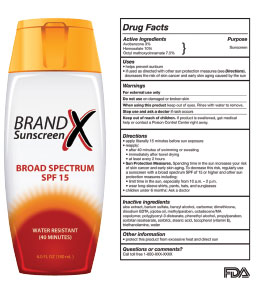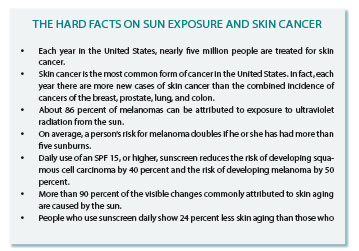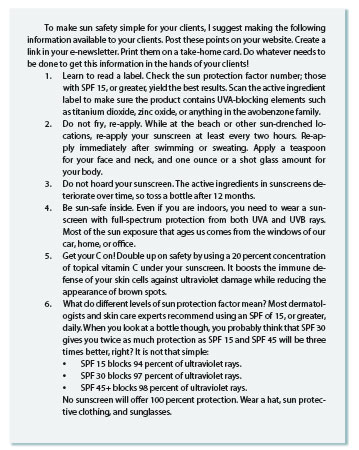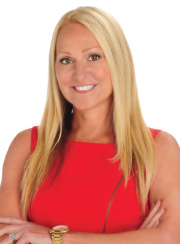Do not let winter and the shorter exposure to sunlight lessen the importance of discussing sunscreen. Educating your clients to practice safe sun can be lifesaving. One in five Americans will develop skin cancer over the course of a lifetime. While that number is epidemic, what is more shocking is the fact that only one in five people wear sunscreen on a daily basis, even though 94 percent of them know that continued exposure to the sun can potentially cause cancer.
It is the skin care professional’s job to keep clients sun-safe year-round, while remaining at the forefront of skin care technologies. As my friend Jim Nicolai, M.D. says, “Sun damage is not going away any time soon. The ozone layer is not getting thicker. Our ultraviolet protection is getting less and less. When it comes to sun exposure, you have to know how much is too much.”
Regulating Sun Protection
The United States, Brazil, and China lead the pack in terms of sun care consumption, while markets in the Asia-Pacific and Latin-American regions (such as Indonesia, India and Mexico) are quickly growing.1 In 2014, 62 percent of global skin care shoppers prioritized sun protection benefits as “an essential or high priority.”2
Though science and technology have advanced over the past several years to dramatically improve the safety and efficacy of sunscreens, there has long been a need to update the governmental regulations associated with them. Growth was made when the Food and Drug Administration (FDA) announced its long-awaited final regulations on sunscreen labeling. The key points to pass onto your clients:
Broad Spectrum Designation – Sunscreens that pass FDA’s broad spectrum test procedure, which measures a product’s UVA protection relative to its UVB protection, may be labeled as “Broad Spectrum SPF [value]” on the front label. For broad spectrum sunscreens, sun protection factor values also indicate the amount or magnitude of overall protection. Broad spectrum SPF products with SPF values higher than 15 provide greater protection and may claim additional uses.
 Use Claims – Only broad spectrum sunscreens with a SPF value of 15, or higher, can claim to reduce the risk of skin cancer and early skin aging, if used as directed with other sun protection measures. Non-broad spectrum sunscreens and broad spectrum sunscreens with an SPF value between two and 14 can only claim to help prevent sunburn.
Use Claims – Only broad spectrum sunscreens with a SPF value of 15, or higher, can claim to reduce the risk of skin cancer and early skin aging, if used as directed with other sun protection measures. Non-broad spectrum sunscreens and broad spectrum sunscreens with an SPF value between two and 14 can only claim to help prevent sunburn.
Water resistance claims on the front label must indicate whether the sunscreen remains effective for 40 minutes or 80 minutes while swimming or sweating, based on standard testing. Sunscreens that are not water resistant must include a direction, instructing consumers to use a water resistant sunscreen if swimming or sweating.
Label Terms – Manufacturers cannot label sunscreens as “waterproof” or “sweat proof,” or identify their products as “sun blocks,” because these claims overstate their effectiveness. Sunscreens also cannot claim to provide sun protection for more than two hours without reapplication or to provide protection immediately after application (for example, “instant protection”) without submitting data to support these claims and obtaining FDA approval.
Drug Facts – All sunscreens must include standard “drug facts” information on the back and/or side of the container.
The Act – Another commitment to sun safety was demonstrated last fall with the passing of the Sunscreen Innovation Act by the United States Senate. The Act is aimed to streamline the approval process for new sunscreen ingredients to ensure that they receive a transparent review within a predictable timeframe. This will, in turn, ensure consumers gain access to the latest safe, effective, and innovative sunscreen products.
 The Sun and Vitamin D
The Sun and Vitamin D
Now that I have covered the regulatory and global perspective on sun protection, I want to delve into the health and medical side of things. In continuing my conversation with Dr. Nicolai, we explored a hot-button topic for both of us – vitamin D. Vitamin D is of particular interest to skin care professionals because it is only made in one place – the skin. As one billion people worldwide are estimated to be vitamin D-deficient, it is a topic every skin care professional should discuss with clients.
Your clients have likely asked if they can get enough vitamin D from the sun; the answer is no. The body makes vitamin D when skin is directly exposed to the sun and most people meet at least some of their vitamin D needs this way. Skin exposed to sunshine through a window while indoors will not produce vitamin D. Cloudy days, shade, and having dark-colored skin also cut down on the amount the skin makes.
However, despite the importance of the sun to vitamin D synthesis, it is prudent to limit exposure of skin to sunlight in order to lower the risk for skin cancer. Dr. Nicolai adds, “Having as much production of vitamin D as you can is very important. Sun exposure is okay in short bursts. However, daily exposure to the sun over a lifetime is a major cause of skin damage.”
Most of your clients may not realize that vitamin D is a hormone. Because we know that hormonal imbalances cause skin conditions, if vitamin D levels can be balanced, a lot of skin conditions like rosacea, eczema, psoriasis and heavy wrinkling will improve. “To get enough D in your system, there is only so much supplementation you can take. People forget to take their supplement; they cannot tolerate it. Having a delivery system for D is the right way to do it,” adds Dr. Nicolai.
In addition to looking for alternative sources of vitamin D, clients should know their levels. Between 40 and 60 is the sweet spot because of its relationship to health conditions and disease processes. If a client gets enough vitamin D, their risk for diseases goes down.
Selling Sunscreen: One Spa Director’s Approach
The final piece of the sun protection puzzle came from a chat with Randy Pierce. I have had the pleasure of partnering with Pierce for years. He has worked around the country for some of the leading spa brands and is now the director of St. Regis San Francisco’s Remède Spa.
“Moving from Florida to Northern California, I had to come up with an entirely different approach to the sales of sunscreen. In Florida, sunscreen was an easy sell. In Northern California where the fog rolls in and more often than not, your golf games are held under an overcast sky, you really need to do more than just educate your client about the necessity of a daily sunscreen; you need to convince them, ‘Yes, even though the sun is hidden behind the clouds, you are still exposed to harmful ultraviolet light.’” He goes on to say, “I tell my clients that the sun is the number one cause of premature aging, but it is also the easiest to prevent. So many people tell me that they just do not like the way sunscreen feels on their face, and I tell them that there are so many sunscreens on the market that they just need to keep trying until they find one they like. Next to a cleanser, if you are young or do not have any signs of aging yet, the best skin regimen you can use is to have a full-spectrum sunscreen. Sunscreen, more than all the creams and serums that probably fill their cabinets, will keep their skin looking young and healthy.”

With two decades in the beauty and skin care industries, Celeste Hilling is the founder, CEO and product formulator for Skin Authority. Hilling is a respected speaker and media resource on skin care, healthy lifestyles, self-esteem, and business. Skin Authority is respected for developing pure and powerful products without the use of parabens, added fragrance, dyes, or animal testing.
Want to read more?
Subscribe to one of our monthly plans to continue reading this article.